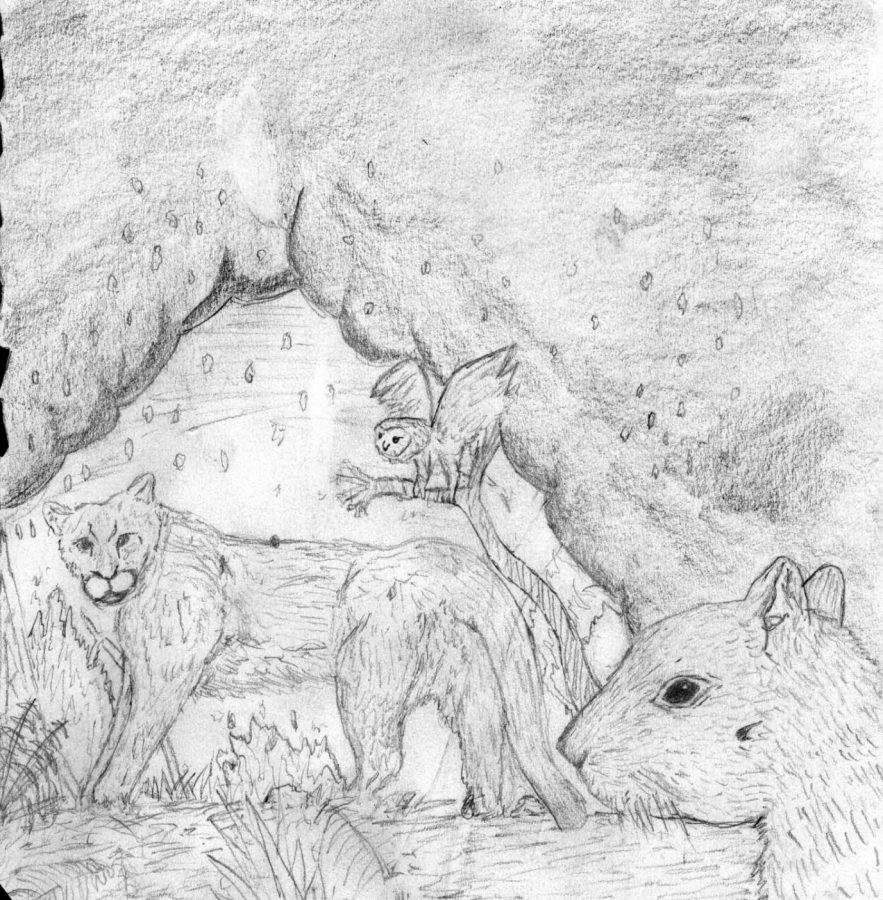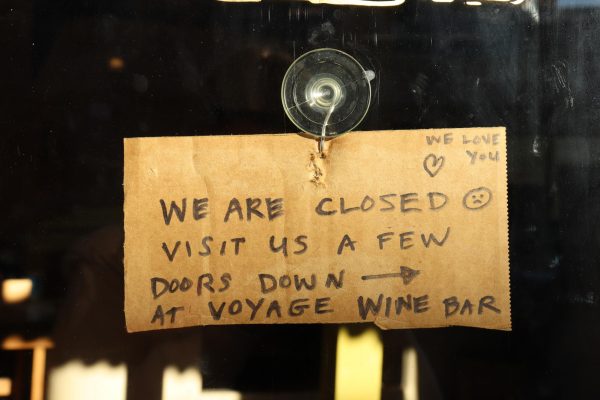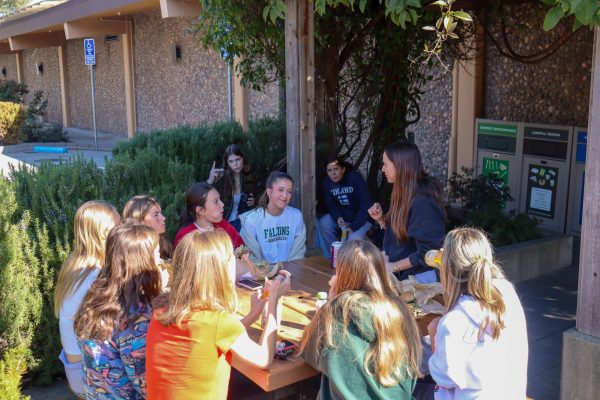Marin wildfires ravage local ecosystems, forcing wildlife to flee
Illustration depicting wildlife escaping the thick smoke of a wildfire.
“2020 could not get much worse,” is a phrase that has become commonplace among people everywhere, especially in the United States. As of Sept. 21, 2020, 27 wildfires raged throughout California, burning homes, forests, and businesses.
Although wildfires can have disastrous effects, certain fires can have a restorative effect on the land when set properly. They wipe away tree carcasses, weeds, and make room for new trees and plants to grow and thrive.
“Fire is a natural phenomenon that has been a large part of keeping our earth in a natural state,” retired San Anselmo Fire Chief Ned Farnkopf said.
Fires begin to have detrimental effects when they are lit unintentionally, or escape control. They can ravage land for miles, burning entire ecosystems.
Many species whose habitats have already been engulfed by human expansion now face the expansion of fires. Predators and prey both must fend for survival and escape.
“Of course the smoke has been horrible for humans and animals both. WildCare can’t really say that we’ve seen an increase in animal intake due to the smoke, but we do tend to see a small uptick in animals hit by cars during a smoke event,” wildlife specialist and WildCare Director of Communications and Marketing, Alison Hermance said.
Meaning that WildCare and other similar organizations do not have the resources to rescue animals in the wilderness. However, WildCare has provided refuge to an increased number of migratory birds, like the western tanager. Hermance believes it is because the smoke offsets the birds’ migratory patterns, forcing them to take an “unscheduled stop” in Marin.
“Animals have adapted to survive in multiple ways. Snakes and small rodents will commonly burrow underground. Where larger animals like deer and mountain lions will flee and try to outrun the fire. Birds will take flight,” Farnkopf said, “Insects quite often don’t survive as well. Depending on the size of the fire this will have a huge impact on how the insects survive. Hot and fast moving fire normally will overtake insects.”
Seeing how many insects make hives and rely on plants as homes and sustenance, they unfortunately don’t have much of a chance when it comes to surviving a large or fast fire.
Preventative measures are effective in stopping fires because they eliminate the chance of the danger in the first place.
“Along with the obvious effects of climate change, one of the problems with these fire seasons is that years of forest management to suppress fires has left a tremendous amount of dry underbrush and other fuel, so fires are bigger, hotter and faster than they probably would be in an ‘unmanaged’ area,” Hermance said, “Controlling human expansion and keeping wildland ‘bridges’ between forests… gives animals the chance to escape the flames without running into conflict with humans. Changing attitudes toward forest management that may reduce the severity of the fires will also help wildlife.”
Forest management is a large factor. However, hot, dry weather with rising temperatures, strong winds, and lightning storms are all byproducts of an ever-worsening change in climate.
“At all large fires there will be a team of wildlife officials. They will advise us of anything out of the ordinary that we will not be expecting or have any idea how to handle,” Farnkopf said.
Outside a burnzone there will be a sort of headquarters set up, where firefighters, consultants, and many others will congregate to help put out the fire.
“For smaller fires, local citizens can stand in and let the local agencies know they are available and if they have any special training in handling domestic animals or keep an eye on any wildlife that might be in need of help,” Farnkophf said.
Starting small is the simplest way to make a change in protecting animals in wildfires. This includes reaching out to foundations, non-profits, and organizations that focus on making a change for wildlife and nature.
Some of these organizations are WildCare, The Marine Mammal Center, Yggdrasil Urban Wildlife Rescue, Sonoma County Wildlife Rescue, Turtle Island Restoration Network, and the Bird Rescue Center. They are focused and located around the Bay Area.
“Any organization having to evacuate their facility faces the loss of their buildings and infrastructure, so financial help will be much needed,” Hermance said.
One can also do research on and volunteer at organizations. WildCare, located in San Rafael, is always in need of help.
According to Hermance, one thing people shouldn’t do is put out water for animals.This is because there are many germs and bacteria that each species carry so the water would become contaminated, and in addition to this if many species begin to crowd the source of water it could spur quarrels and these are quite lethal.
Animals, just like humans, are in danger due to the fires. Prevalent matters of protection for animals include proper forest management, staying up to date and informed, and recognizing the issue and its dangers.








